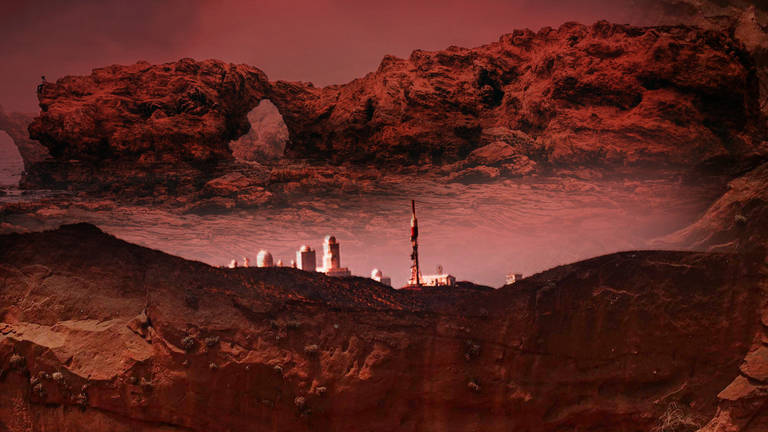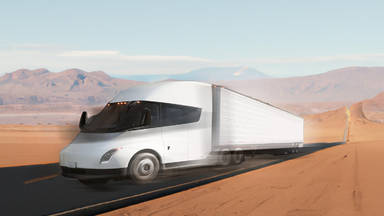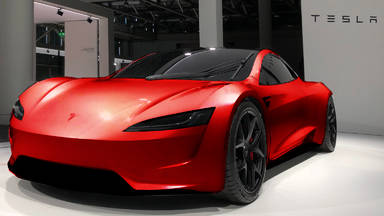
In a late night tweet last summer, tech billionaire, Elon Musk outlined perhaps his boldest plan: "Nuke Mars!"; it certainly was a joke, but let us not forget that Elon Musk was already floating the idea of detonating a thermonuclear device on Mars, around four years ago, on TV. Whether you take him at his word or not, it's definitely worth checking out Spacex to examine his ambition to colonize the red planet. So today we ask the question: What will spacex do when they get to Mars?
Let's think about how serious Elon Musk actually is about getting to Mars. The simple answer is he's very serious. While the billionaires' most famous company is probably the electric car giant Tesla, His rocket company, Spacex, was established back in 2002 with the express vision of reducing travel costs to Mars, and he has made no secret of the fact that he is in a hurry to get there.
"We need to get to mars as soon as possible because we don't know when something is going to happen to the earth."
He stated publicly also suggesting humanity would do well to colonize Mars before World War III. To this end spacex has invested billions of dollars on the problem of not just how to get to Mars, but how to get there in a sustainable and cost-effective manner.
The plan as it currently stands really is quite spectacular. To begin with, a fully reusable spaceship that is currently in development will be the workhorse of the early Mars missions able to carry in excess of 100 metric tons of payload all the way to the red planet and back.
Starship will be propelled into orbit thanks to a similarly futuristic booster stage rocket known as the super heavy super heavy designed solely for helping starship escape Earth's gravity, will be powered by no fewer than 28 mighty spacex designed raptor engines, 20 to lift starship into orbit and eight to bring the booster stage safely home to earth in one of Spacex's trademark show-stopping vertical landings.
The reusability of space hardware is typical of the Spacex Mars strategy. Elon Musk himself has repeatedly claimed that he finds it absurd that his primary space technology competitors at Lockheed and Boeing are not selling disposable aircraft, but rather single-use rockets.
Once in orbit, Starship will refuel most likely from another starship unit configured specifically for use as an orbital tanker. It will then begin its 100 or so day voyage to the red planet.
Upon arrival to Mars, The spacecraft's swing is slowed down by the martian atmosphere. Starship's heat shield will likely suffer some damage or ablations, but this has been taken into account by the Spacex design team.
The next delicate problem to overcome is where exactly to land on Mars. If you thought that the surface of Mars had nothing like Earth's sparkling oceans and striking coastlines, you should think again. After all, the highest mountain in our solar system, Olympus Mons, was found on Mars.
One consideration that mission planners are already grappling with is the lie of the land at lower elevations, where the atmosphere is thicker, which will help out decelerating incoming starship. Nut a much more important consideration is still the local availability of water.
It is common knowledge that liquid water once flowed across the presently barren terrain of Mars. Some of this water remains trapped in the ice. As such, this ice will be an essential necessity for any future colony. The parched throats of future colonists aside, the freedom from having to cut millions of gallons of heavy water across the solar system is quite helpful to the overall mission.
Another musk invention will come into play once the propellant plant and base are better established. It is the network of Starlink satellites, currently lighting the night sky in perfect geometric formations around planet Earth, is likely to be used in the Martian atmosphere to ensure vital communication links between colonists on the red planet and people at home. It is not too much of a fantasy to imagine an autonomous Teslas shuttling around the surface of Mars doing important tasks like ferrying ice to the propellant plants.
Once a base and a means of reliable transportation to and from earth is established, other parties will need to step in and devise how the colony ultimately unfolds. The most difficult problem Spacex has repeatedly said is getting there and getting back without incident.
Other players from the worlds of government academia and the private sector are needed to make the martian project a success, hopefully as early as the second half of this decade. sS whether or not Elon Musk actually plans on nuking our nearest interplanetary neighbor, if nothing else, that would certainly melt some ice. His work will for sure make an explosive impact on the red planet.









